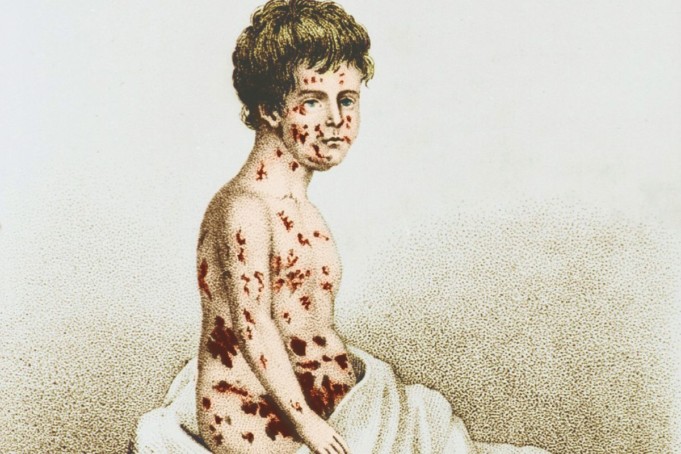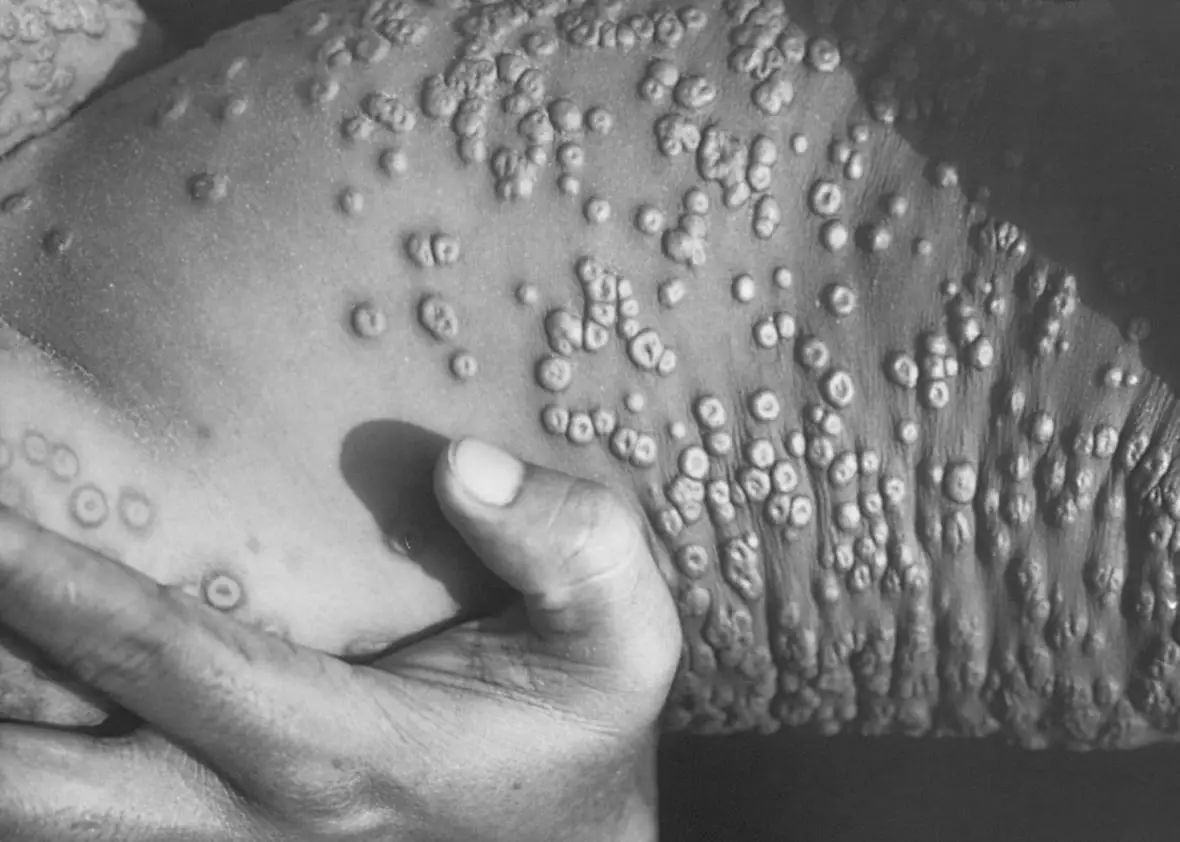Smallpox, also known as the Red Plague, Pox, or Speckled Monster, was a contagious disease caused by two viral strains, Variola major and Variola minor.
The last recorded case of the disease was diagnosed in October 1977, and the World Health Organization (WHO) declared that the disease was eradicated worldwide in 1980.
The risk of dying after getting infected with the virus is about 30%, with an increased risk in infants. Those who survived were left with scarred skin and some, blind.
Symptoms of smallpox began with fever and vomiting, which was followed by sores in the mouth and skin rash. Over a period of days, the rash turns to bumps filled with fluids and with dimples in the center.
These bumps congealed to form crusts, fell off, and left the characteristic scars. Smallpox, as with all viral diseases, has no cure. Prevention is by vaccination.
History of Smallpox
There is no known origin of smallpox. The earliest origin of the disease is thought to date as far back as the 3rd Century BCE in the Egyptian era when smallpox rashes were found on three mummies.
Since then, it has occurred on and off throughout history with the first recorded case of the disease being in China in the 4th Century CE.
Several outbreaks have claimed the lives of multitudes over the millennia due to its contagious nature and the growth of civilization, exploration, and expansion of trade routes.
The disease is estimated to have killed up to 300 million people in the 20th Century alone and about half a billion people in the last 100 years of its existence.
One of the earliest methods by which people controlled the spread of the disease was the use of variolation. In this process, the pus from smallpox sores was given to people that have never had the disease either by inhalation or by scratching the rashes.
People who did this later went on to develop some of the symptoms of the illness like fever and rashes. With this method, fewer people died from the disease.
In 1796, an English doctor called Edward Jenner observed that milkmaids who were infected with the disease via variolation did not show any symptoms of smallpox. After several years of testing, a vaccine was discovered, and this quickly replaced the need for variolation.
Smallpox was first used as a term in Britain in the early 1700s to describe the disease to distinguish it from Syphilis, which was then known as the great pox.
Types of Smallpox
Variola major and Variola minor were the most common variants of smallpox. V. minor was a less severe form of the disease. According to the Center for Disease Control and Prevention (CDC), only 1% of those who were infected with this strain died.
V. major was a more fatal and common strain with extensive rashes and a high fever. The CDC estimates that this particular strain caused about 90 % of smallpox cases, and it killed approximately 30% of those it infected.
Other forms of smallpox were hemorrhagic and malignant smallpox. These forms of smallpox, although rare, were extremely fatal. Hemorrhagic smallpox was a severe form that caused extensive bleeding in the skin, gastrointestinal tract, and mucous membranes.
This form of smallpox was common in adults. The skin, when infected with hemorrhagic smallpox, did not blister but remain smooth. Bleeding occurred beneath the skin, which made it look black.
Malignant smallpox, on the other hand, had lesions that were flush and flat against the skin, accompanied by a high fever, extensive rash on the tongue, and symptoms of toxemia. It accounted for about 10% of smallpox cases, with most being children.
Symptoms of Smallpox
The symptoms of the disease appeared around 10 to 14 days after infection. The incubation period was about 7 to 14 days; within this period, infected people looked healthy and could not infect others.
After the incubation period, flu-like symptoms began to appear. These included;
- Fever
- Headache
- Intense back pain
- Nausea and vomiting
- Weakness and fatigue
- Overall discomfort
These symptoms would go away after a few days. Then flat, red spots would begin to appear on the infected person’s face, hands, hands, forearms, and then the lower body.
With two days of appearance, these red spots would begin to turn into small blisters filled with fluid, which later develops into pus. The abscess would break open and begin to scab over after 8 to 9 days. These scabs will eventually fall off, leaving deep scars.
Transmission of Smallpox
Transmission of the disease occurred through airborne inhalation of the virus. This could from droplets released from the oral or nasal mucus of an infected person.
It was also transmitted from physical contact with an infected person, usually at a length of 6 feet. Other means of infection was the direct contact with infected bodily fluids or contaminated objects such as clothes.
The virus is capable of crossing the placenta, although the incidence of contact from birth was low. Although the disease was incredibly infectious, the rate at which it was spread was slow compared to other viral infections. Smallpox is not known to be transmitted by insects or animals.
Treatment
Many doctors would likely not recognize the disease in its early stages if there is an outbreak today, which would lead to its spread. However, an outbreak of the disease today would call for a national state of emergency.
Since smallpox is a viral disease, a cure for it does not exist. Treatment is by prevention using vaccination. If there is an infection, treatment would involve relieving symptoms and keeping the person from being dehydrated.
Antibiotics may also be prescribed in the event that the person also develops a bacterial infection in the lungs or skin.
Current Status of Smallpox
In the mid 20th Century, the World Health Organization (WHO) initiated a plan to rid the world of the disease. Unfortunately, this global eradication program was set back due to a lack of funds, personnel, and commitment from countries, as well as a shortage of vaccine donations.
In spite of their best efforts, smallpox was still widespread as of 1966 and caused regular outbreaks in many countries across South America, Africa, and Asia.
In 1967, the Intensified Eradication Program began anew. Laboratories in many countries where smallpox was endemic were able to produce more and higher quality vaccines. Many factors also played an essential role in the success of the intensified efforts. These included
- The development of the bifurcated needle
- Establishment of a detection system to detect and investigate cases of the disease
- Mass vaccination campaigns of susceptible populations.
By 1967, smallpox had already been eliminated in Europe and North America, which left Africa, South America, and Asia. The steady progress of the program saw the eradication of the disease worldwide by 1977.













